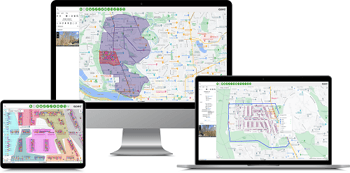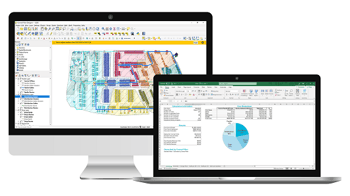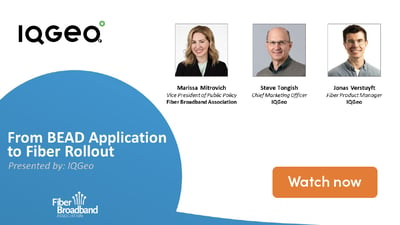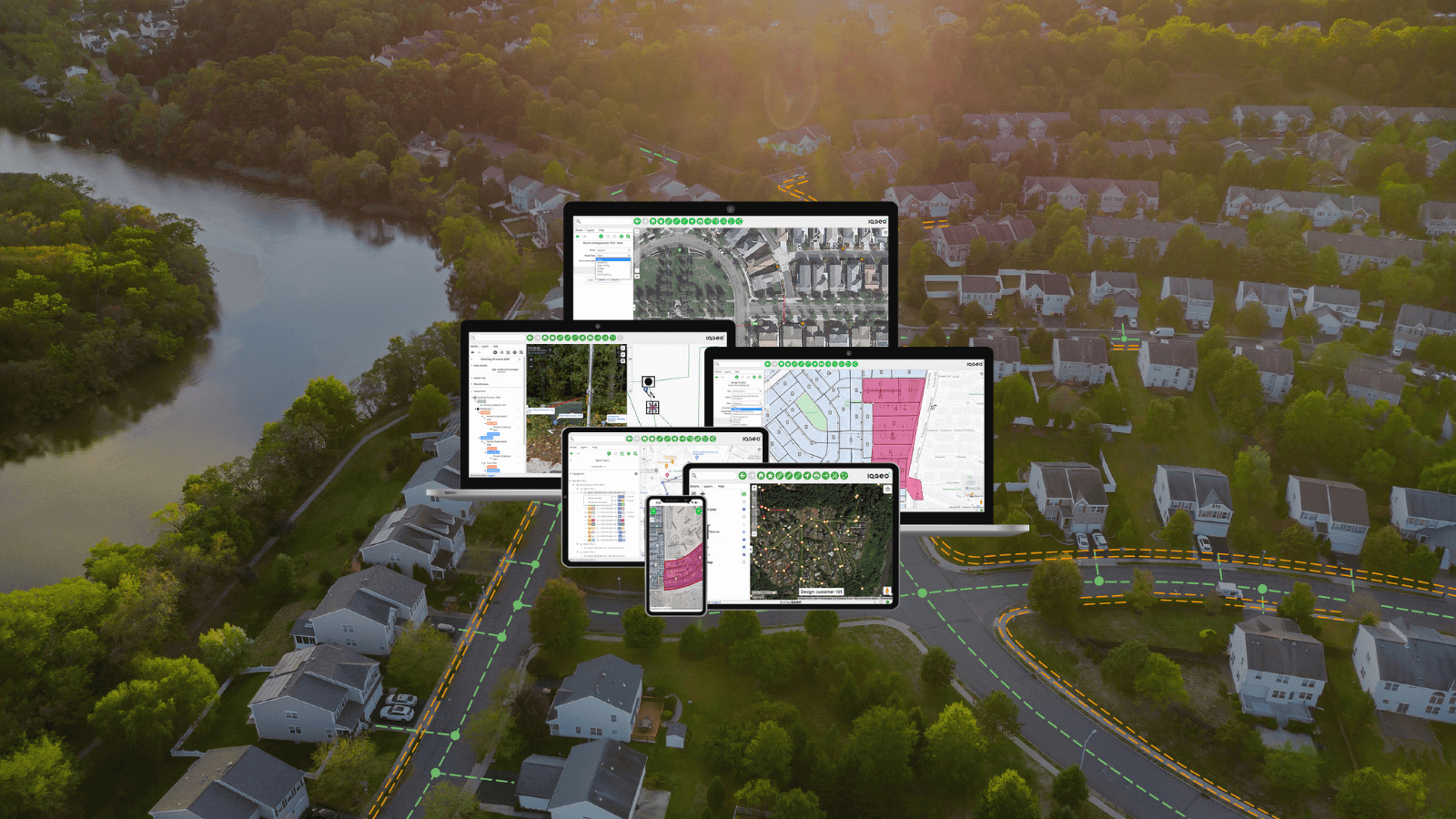IQGeo’s webinar in partnership with the Fiber Broadband Association (FBA) explored the intricacies of Broadband, Equity, Access, and Deployment (BEAD), including what to consider when planning application to fiber rollout. Steve Tongish, Chief Marketing Officer at IQGeo outlines what we learned from the discussion.
What is BEAD?
BEAD is a comprehensive framework for the United States designed to address the multifaceted challenges of digital connectivity. In essence, BEAD is a strategic approach that seeks to bridge the digital divide, ensuring that high-speed internet access is not only widespread but also equitable.
The importance of BEAD cannot be overstated. In a world where digital connectivity is synonymous with opportunity, BEAD becomes the catalyst for economic growth, education, healthcare access, and social inclusion. By focusing on these four pillars, BEAD lays the foundation for a connected future where no one is left behind.
The BEAD application process
Submitting a BEAD application holds several key benefits for the fiber rollout, contributing to the advancement of digital connectivity and bridging the digital divide across the United States. For instance, BEAD helps to initiate inclusive access, and aims to ensure that all individuals can connect with high-speed internet. By funding partnerships between states, territories, communities, and stakeholders, the program targets underserved and unserved areas, promoting universal connectivity.
BEAD's role as a catalyst for the fiber market underscores its strategic importance in shaping the nation's digital landscape. By accelerating the deployment of fiber-optic networks on a national scale, the program not only broadens internet access but also serves as a driving force behind an array of technological advancements across many industries and communities.
In addition, BEAD's emphasis on fostering a diverse and highly skilled workforce in the broadband sector reflects a forward-thinking approach to both economic development and technological progress. By prioritizing diversity, the program not only opens doors to employment opportunities for individuals from various backgrounds but also enriches industries with a wealth of perspectives, ideas, and talents.
Yet, while the vision of a digitally connected world is compelling, the road to achieving it requires meticulous planning.
Aspects to consider in the fiber deployment journey
Successful planning is at the heart of any transformative initiative as there are many factors that can influence its potential for success. From community engagement to infrastructure scalability, a thorough understanding of these elements is essential for effective BEAD implementation.
Considering long-term objectives is crucial when looking at BEAD applications for several reasons, each contributing to the success and sustainability of broadband infrastructure development. Long-term objectives allow for the effective allocation of resources, including funding, technology, and human capital. Factoring in disclosures around plans to waive laws that restrict public sector participation is also a critical aspect. By being transparent about any intentions to seek waivers, applicants signal their awareness of regulatory frameworks and their intention to operate within legal boundaries.
The areas of focus outlined by the FBA carry significant implications for effective broadband deployment. Firstly, the emphasis on the letter of credit requirement is noteworthy. This communication with the National Telecommunications and Information Administration (NTI) underscores the pivotal role this letter plays in securing the necessary funding for deploying broadband infrastructure.
Spotlight on manufacturing and supply chain
Additionally, the scrutiny on manufacturing and the supply chain introduces a comprehensive approach to ensure products are manufactured in the U.S. for broadband deployment. Considerations range from treating fiber material as a construction material to addressing costs related to workforce training and planning, particularly in the context of supply chain disruptions during the pandemic.
The FBA recognizes the need to navigate wait times for supply chains, meet deadlines, and prioritize affordability for both individuals and companies seeking low-cost broadband options. The application permitting process, with its inherent challenges such as delays, timing, and weather, is acknowledged as a critical component impacting efficiency and, consequently, costs. The taxation of subgrantees on received funds adds another layer of financial consideration, influencing the approach to subgrantee applications.
Moreover, the establishment of an Extremely High-Cost Threshold becomes crucial in determining the maximum allowable cost for location, a decision each state has the flexibility to shape. In sum, these focal points underscore the complexity of fiber planning, urging subgrantees to be acutely aware of the multifaceted variables involved in successful broadband deployment.
So, with this in mind, how can businesses move from the planning stage to a successful execution?
Fiber network cost estimation - A strategy for success
When it comes to fiber network cost estimation, there are an array of options available to help with this. This includes manual in-house or contractor design, purchasing an automated planning software and using a rapid cost study service, all with their own set of benefits.
Fiber network planning options
Manual design in-house or contractor
Purchase automated planning software
Rapid cost study service
Manual fiber design
When establishing design rules for your broadband network, the approach can involve either manual execution or outsourcing to a contractor. The advantages of a manual process include familiarity with the method, predictable outcomes, and applicability to smaller network configurations.
On the flip side, the drawbacks include inflexibility, the potential for inconsistent designs, and the high cost associated with time. The manual approach, while offering a known and controlled process, faces challenges in scalability and adaptability, which may impact the efficiency and cost-effectiveness of the network deployment.
Automated fiber planning software
There’s also the option of purchasing automated fiber planning software, a tool enabling you to automate the process of high level/low level design. The advantages of moving forward with this option is that it’s ideal for larger networks, flexible, efficient and accurate.
However, it's important to acknowledge the certain trade-offs, such as the need for users well-versed in the software, a potential learning curve associated with its utilization, and the time required for initial configuration. Despite these challenges, the benefits of increased efficiency and accuracy make automated planning software an appealing choice for comprehensive broadband network design. Purchasing automated fiber network planning software is ideal for larger network operators.
Rapid FTTH cost study service
Organizations also have the alternative option of engaging a supplier for automated fiber planning services. The advantages of this approach are substantial, including the absence of the need for in-house software users, rapid and flexible solutions, and high accuracy—making it particularly suitable for smaller networks.
Nevertheless, this avenue presents drawbacks such as reliance on an external resource, a predefined cost structure and architecture, and the potential for increased expenses at scale. While outsourcing to a supplier streamlines certain aspects of the process, careful consideration of the associated trade-offs is essential for optimizing the efficiency and cost-effectiveness of broadband network deployment.
On-demand webinar - From BEAD application to fiber rollout
To learn more about some of the topics discussed, check out the webinar that we hosted in partnership FBA's Marissa Mitrovich who has extensive experience with the BEAD environment.
Building a digitally connected world
The path to a digitally connected world is both promising and intricate, demanding a comprehensive strategy that encompasses diverse facets of planning, execution, and ongoing optimization. As organizations delve into automated design solutions, considerations about cost calculation, granularity, and design details become paramount for ensuring the efficiency and effectiveness of broadband network deployment. With BEAD leading the charge, and stakeholders addressing these intricacies, the vision of a seamlessly connected future for all remains within reach.
To find out more about IQGeo’s automated fiber planning and design software or Rapid FTTH Cost Service, book a demo with our industry experts.

CMO at IQGeo






 Previous
Previous







